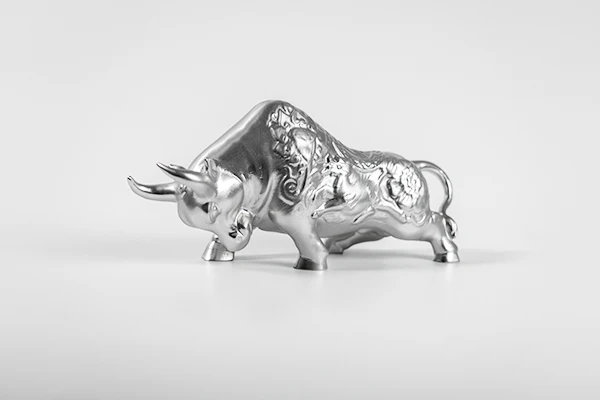1、 Introduction to CNC machining and sheet metal processing
(1) CNC machining
CNC machining is a subtractive manufacturing process that specializes in producing CNC parts using tools such as lathes, mills, drills and grinders. Software controls the tools and operates them precisely and repetitively, ensuring dimensional accuracy and consistency of each CNC part.CNC machining is ideally suited for producing parts with complex shapes or tight tolerance requirements and is popular in industries such as aerospace, automotive and medical.
(2) Sheet metal processing
Sheet metal working is a manufacturing process in which thin metal sheets are machined into parts and products. It involves several steps including cutting, bending, stamping and welding. It is a popular choice because it provides a low-cost solution for mass production of metal parts. It is widely used in industries such as construction, HVAC and appliances.
2、Difference between CNC parts and sheet metal parts
(1) Processed materials
CNC parts are usually made from solid blocks or blank materials, such as metals like steel, aluminum or titanium. Excess material is removed through cutting, drilling, milling or turning operations to form the desired cnc part.
Sheet metal parts are primarily made from thin, flat sheet metal materials such as stainless steel, aluminum, brass or copper. They can be easily formed, bent or cut to form complex shapes.
(2) Production process
The production of CNC parts relies on advanced CNC machines such as lathes, mills, or drills. Precisely removing material according to a predetermined design, including milling, turning, drilling, reaming and tapping operations, CNC machines follow specific toolpaths to achieve the desired shape, size and surface finish of the part.
Sheet metal fabrication involves processes such as cutting, bending, welding and assembly. Sheet metal is first cut to the desired size, then bent or shaped, multiple parts are welded and joined, and finally finished.
(3) Complexity and accuracy
CNC parts feature high precision and tight tolerances. CNC machines offer excellent accuracy to ensure consistent dimensions and surface finish. It is often the preferred method of manufacturing parts that require intricate detail, fine features or tight tolerances.
Sheet metal parts have complex geometries. Sheet metal working is highly flexible, allowing the production of prototypes, small batches or mass production, but with relatively low precision.
(4) Strength and structural integrity
The strength of a CNC part depends on material selection and machining operations. Solid metal blocks are inherently strong, and machining techniques can further enhance structural integrity. Used in industries with stringent requirements for strength, load carrying capacity and precise fit.
Sheet metal parts typically have inherent strength and structural integrity. Bending, folding and welding operations provide rigidity and durability and are often used in applications where strength and rigidity are critical.
3、Comparison of CNC machining and sheet metal processing
(1) Precision
CNC machining can produce cnc parts that are more accurate and consistent than sheet metal working, and can produce parts with more complex shapes and tighter tolerances, making it ideal for manufacturing difficult-to-machine parts.
(2) Cost-effectiveness
Sheet metal working is more economical for mass production. It is faster and requires fewer steps than CNC machining.
(3) Type of material
CNC machining can process a wide range of materials, including metals, plastics and composites. Sheet metal fabrication is limited to metallic materials. If the part requires non-metallic materials, CNC machining is a better option.
(4) Production
When production volumes are high, sheet metal fabrication is usually a better choice for producing parts in volume quickly and efficiently. When production volumes are lower, CNC machining may be more appropriate, producing parts with greater accuracy and consistency.
(5) Delivery time
CNC parts typically have shorter lead times than sheet metal fabrication, making CNC fabrication a better choice for parts with tight lead times.
(6) Surface Finishes
When a specific finish is required, CNC machining is often a better choice because CNC parts have a finer finish than sheet metal working parts.
(7) Automation
CNC machining offers a higher degree of automation than sheet metal working, allowing for faster and more consistent production. Computer-controlled machines can perform operations with a high degree of precision and accuracy, which is especially useful for parts that require high precision and consistency.

4、When to use CNC machining?
CNC machining is usually more suitable for the following situations:
(1) Complex shapes
It is more suitable for producing CNC parts with complex shapes and can handle complex designs and tight tolerances.
(2) Material type
A wide range of materials such as metals, plastics and composites can be processed for a wider range of applications.
(3) Precision and accuracy
CNC parts, which are known for their high precision and accuracy, are better suited for producing parts that require tight tolerances and precise specifications.
(4) Surface treatment
Better suited for producing parts with higher surface finishes, smoother surface finishes can be achieved.
(5) Low production
For small lot part production, CNC machining may be a better option to produce parts with high accuracy and consistency without changing molds.
5、When do I use sheet metal processing?
Sheet metal fabrication is usually better suited for the following situations:
(1) Costs
Sheet metal working is usually more economical than CNC machining, especially for high volume production, where sheet metal materials are cheaper and the production process is less costly.
(2) Production speed
For some parts with simple designs, sheet metal fabrication may be a faster alternative. Processes such as stamping, punching and bending can create parts quickly and efficiently without the need for complex programming or tooling.
(3) Type of material
Suitable for producing parts made of metal materials such as aluminum, steel and copper.
(4) Part size
For the production of larger parts, especially those with simple designs, sheet metal fabrication may be a better choice.
(5) Number
Sheet metal fabrication is often a better option for mass-produced parts, especially those with simple designs.
conclude
While both sheet metal and CNC parts are important in manufacturing, there are significant differences between the two in terms of materials, processes, complexity, accuracy and strength. Understanding these differences can help you choose your machining services wisely.
If you’re looking for a machining manufacturer, Xavier is your best choice, specializing in machining to meet your needs. Their team is well-equipped to provide quality machining solutions. For more information or to discuss your machining needs, please feel free to contact us.





